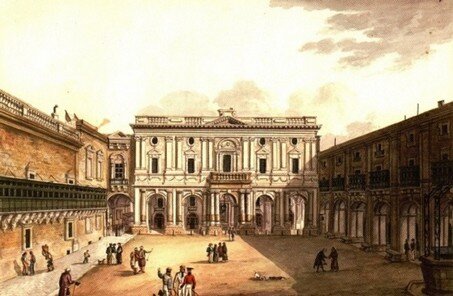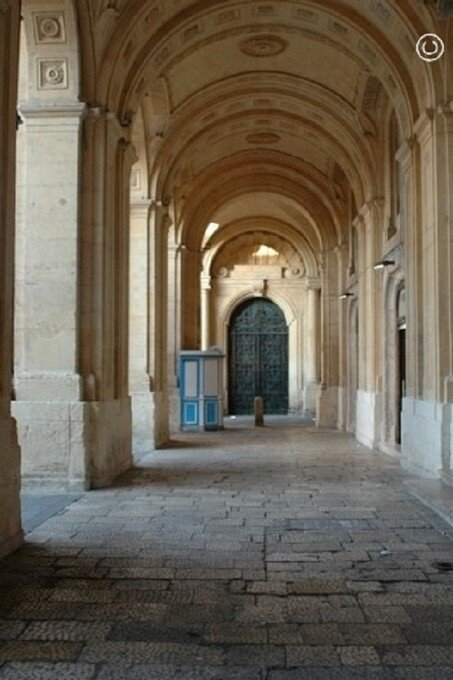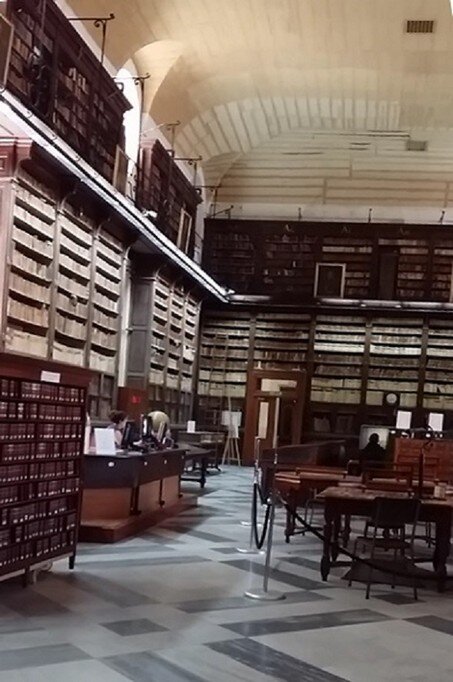Facade of the National Library Valletta
The National Library
The National Libraryof Malta, or Biblotheca is the place were there are thousands of manuscripts from the time of the Order of St John. Although Napoleon Bonaparte had ordered all the manuscripts to be destroyed, fortunately, only a part of the priceless collection fell victim to this decision; part of the financial documentation of the Order was ripped into strips to make gunpowder cartridges for the pistols and guns of the French soldiers.
Historians and scientists from all over the world go to this library for research, because the collection also contains the archives of the Order of St. John, including the founding act of the Order of St. John from 1113.
In 1555 the idea was expressed about a public library. Fra 'Claude de la Sengle, Grand Master of the Order of St. John, thought it a good idea and stated that all the books of the deceased knights should be donated to the common treasury of the Order.
The first library was housed in a room above the chapel of St John's monastery church before moving to the Forfantone building.
In 1776 the Bibliotheca Publica Foundation was founded by Grandmaster Emmanuel de Rohan.
The most important collections were:
Fra 'Louis Guérin de Tencin, in which a collection of Cardinal Joaquin Portocarrero, who had bought the Tencin himself at the death of Cardinal in 1760;
bailiff Louis Guérin de Tencin and Grand Cross of the Order who died in 1766.
The library was named Bibliotheca Tanseana in honor of the Tencin. The Tencin is still considered today as the founder of the library.
In the Forfantone building (corner of Republic Street and St. Lucy Street) the books were kept in small rooms. Some books very rare. The building became too small.
The Polish architect Stefano Ittar living in Italy was commissioned by Grandmaster Emmanuel de Rohan to design a library. 1796 the building in the heart of Valletta was finished.
The books were not moved over, the two-year French blockade followed, and the British period began in 1800.
In 1812, 14 years after the building was finished, the building was officially inaugurated by the British civilian commissioner, Sir Hildebrand Oakes. The chosen day was the official birthday of King George III, June 4. From that moment on the name is Malta Public Library.
In 1925 the Library got its legal status and in 1936 King George V. gave it the "Royal" Malta Public Library.
In 1976 a new public library was opened in Floriana and the library in Valletta became the "national library of Malta" and is now a research library.
The design is an early example of neoclassical architecture in Malta. It has a symmetrical facade with Doric and Ionic columns.
Opening hours | Not open to the public / no entry |
Additional information
The design is an early example of neoclassical architecture in Malta. It has a symmetrical facade with Doric and Ionic columns.
Facade of the Royal National Library in the 19th Century by Charles de Brocktorff.


There are various display cases in the library, concerning the library.

This "National Library" page is part of “The Malta Magazine”.
This magazine is for every resident and visitor to the country of Malta. But is also educational and for anyone interested in Malta. The Malta Magazine highlights the past and present of specific subjects and/or places of interest with the help of extensive information and photos.
As a tool during your journey of discovery through Malta, you can use our information services free of charge. You can do this in two ways, via our website https://maltaguide.pro or our app depending on your operating system, Google Play or Apple Store. Both give you the same information.
“The Malta magazine” is the best, ultimate and most comprehensive magazine you can get of Malta.
The magazine is growing fast and will soon contain more than 350 interesting topics.
Find and discover interesting sights and discover the many historical secrets of the country Malta. Find all things to do and places of interest in your exploration.
“The Malta magazine” is also convenient whether you are walking, driving a car, or using the hop-on and hop-off bus trip, boat trip, etc.
“The Malta magazine” provides you with general information about the sights, Malta’s beauty, secrets, history and culture, its architecture, fortifications, etcetera and specific information as: what took place here?; When was it built and by whom?; What are the functions of all these.
“The Malta magazine” describes also religious subjects, museums, parks, places of interest, public toilets and much more useful information. Interesting texts set up by local experts and additional informative photos make this app distinctive.
“The Malta magazine” answers many questions and shows in an easy way to navigate way where the sights are located. A great landmap and citymap made specifically for you, is a great tool. You can immediately see where you are and where the sights are.
In this "Malta Magazine" you will find the location, address, opening hours and admission / entrance fee, general additional information and news about the spot.
Everything in “The Malta magazine” is easy to operate, without any knowledge and suitable for young and old.
“The Malta magazine” is free while you normally would pay for a guided tour, you may enjoy navigating through Malta on your own terms.
“The Malta magazine” is constantly maintained about: attractions which are closed due to renovation, changed entrance fees or opening times, etc. This maintenance costs a lot of money. However, it has been decided not to include annoying advertisements. The “The Malta magazine” has no hidden costs.
The skillfielly texts are written by local experts and additional informative photos make “The Malta magazine” information provision distinctive.



